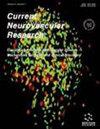Electroacupuncture Inhibits Neural Ferroptosis in Rat Model of Traumatic Brain Injury via Activating System Xc−/GSH/GPX4 Axis
IF 1.7
4区 医学
Q3 CLINICAL NEUROLOGY
引用次数: 0
Abstract
Background: Ferroptosis is an iron-dependent regulating programmed cell death discovered recently that has been receiving much attention in traumatic brain injury (TBI). xCT, a major functional subunit of Cystine/glutamic acid reverse transporter (System Xc−), promotes cystine intake and glutathione biosynthesis, thereby protecting against oxidative stress and ferroptosis. Objective: The intention of this research was to verify the hypothesis that electroacupuncture (EA) exerted an anti-ferroptosis effect via an increase in the expression of xCT and activation of the System Xc−/GSH/GPX4 axis in cortical neurons of TBI rats. Methods: After the TBI rat model was prepared, animals received EA treatment at GV20, GV26, ST36 and PC6, for 15min. The xCT inhibitor Sulfasalazine (SSZ) was administered 2h prior to model being prepared. The degree of neurological impairment was evaluated by means of TUNEL staining and the modified neurological severity score (mNSS). Specific indicators of ferroptosis (Ultrastructure of mitochondria, Iron and ROS) were detected by transmission electron microscopy (TEM), Prussian blue staining (Perls stain) and flow cytometry (FCM), respectively. GSH synthesis and metabolism-related factors in the content of the cerebral cortex were detected by an assay kit. Real-time quantitative PCR (RT-QPCR), Western blot (WB), and immunofluorescence (IF) were used for detecting the expression of System Xc−/GSH/GPX4 axisrelated proteins in injured cerebral cortex tissues. Results: EA successfully relieved nerve damage within 7 days after TBI, significantly inhibited neuronal ferroptosis, upregulated the expression of xCT and System Xc−/GSH/GPX4 axis forward protein and promoted glutathione (GSH) synthesis and metabolism in the injured area of the cerebral cortex. However, aggravation of nerve damage and increased ferroptosis effect were found in TBI rats injected with xCT inhibitors. Conclusions: EA inhibits neuronal ferroptosis by up-regulated xCT expression and by activating System Xc−/GSH/GPX4 axis after TBI, confirming the relevant theories regarding the EA effect in treating TBI and providing theoretical support for clinical practice. conclusion: EA Inhibits Neuronal Ferroptosis by up-regulated xCT expression and by Activating System Xc−/GSH/GPX4 axis after TBI, confirming the relevant theories regarding the effect of EA treatment on TBI and guiding clinical practice.电针通过激活 Xc-/GSH/GPX4 系统轴抑制创伤性脑损伤大鼠模型的神经铁凋亡
背景:xCT是胱氨酸/谷氨酸反向转运体(Xc-系统)的一个主要功能亚基,它能促进胱氨酸摄入和谷胱甘肽的生物合成,从而保护细胞免受氧化应激和铁变态反应的影响。研究目的本研究旨在验证电针(EA)通过增加 TBI 大鼠皮质神经元中 xCT 的表达和激活 System Xc-/GSH/GPX4 轴发挥抗铁蛋白沉积作用的假设。研究方法制备 TBI 大鼠模型后,在 GV20、GV26、ST36 和 PC6 处对动物进行 15 分钟的 EA 处理。在制备模型前 2 小时,给大鼠注射 xCT 抑制剂磺胺沙拉嗪(SSZ)。神经损伤程度通过 TUNEL 染色和改良神经严重程度评分(mNSS)进行评估。透射电子显微镜(TEM)、普鲁士蓝染色法(Perls 染色法)和流式细胞术(FCM)分别检测铁中毒的特定指标(线粒体超微结构、铁和 ROS)。检测试剂盒检测了大脑皮层内容物中的 GSH 合成和代谢相关因子。采用实时定量 PCR(RT-QPCR)、Western 印迹(WB)和免疫荧光(IF)检测损伤大脑皮层组织中 System Xc-/GSH/GPX4 轴相关蛋白的表达。结果EA成功缓解了创伤性脑损伤后7天内的神经损伤,显著抑制了神经元的铁突变,上调了xCT和System Xc-/GSH/GPX4轴前导蛋白的表达,促进了大脑皮层损伤区谷胱甘肽(GSH)的合成和代谢。然而,注射了 xCT 抑制剂的创伤性脑损伤大鼠神经损伤加重,铁蛋白沉积效应增强。结论EA在TBI后通过上调xCT表达和激活System Xc-/GSH/GPX4轴抑制神经元铁突变,证实了EA治疗TBI效果的相关理论,为临床实践提供了理论支持:EA在TBI后通过上调xCT表达和激活系统Xc-/GSH/GPX4轴抑制神经元铁凋亡,证实了EA治疗TBI效果的相关理论,为临床实践提供了指导。
本文章由计算机程序翻译,如有差异,请以英文原文为准。
求助全文
约1分钟内获得全文
求助全文
来源期刊

Current neurovascular research
医学-临床神经学
CiteScore
3.80
自引率
9.50%
发文量
54
审稿时长
3 months
期刊介绍:
Current Neurovascular Research provides a cross platform for the publication of scientifically rigorous research that addresses disease mechanisms of both neuronal and vascular origins in neuroscience. The journal serves as an international forum publishing novel and original work as well as timely neuroscience research articles, full-length/mini reviews in the disciplines of cell developmental disorders, plasticity, and degeneration that bridges the gap between basic science research and clinical discovery. Current Neurovascular Research emphasizes the elucidation of disease mechanisms, both cellular and molecular, which can impact the development of unique therapeutic strategies for neuronal and vascular disorders.
 求助内容:
求助内容: 应助结果提醒方式:
应助结果提醒方式:


